U.S.S. Scorpion SSN 589 Monument
Introduction
Text-to-speech Audio
Images
The U.S.S. Scorpion SSN 589 Monument in Huntington Park, located in Newport News, VA.

Crew members on top on the U.S.S. Scorpion. Photo taken in April 1968
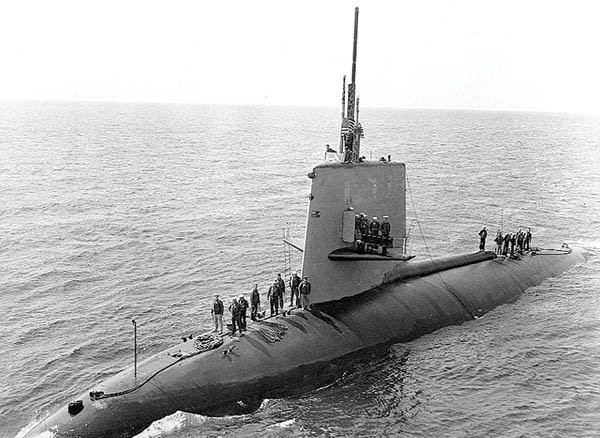
Showcasing the U.S.S. Scorpion before first launch
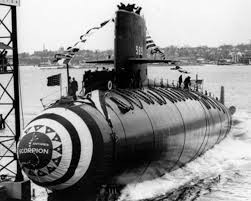
Commander Francis A. Slattery, USN. The officer in command of U.S.S. Scorpion when she was lost in 1968.
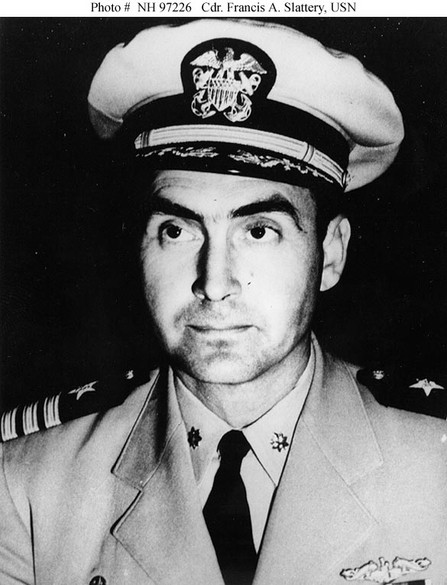
Commissioning of the U.S.S. Scorpion, 29 July 1960. Photo # USN 1051824, courtesy of Scott Koen and ussnewyork.com.
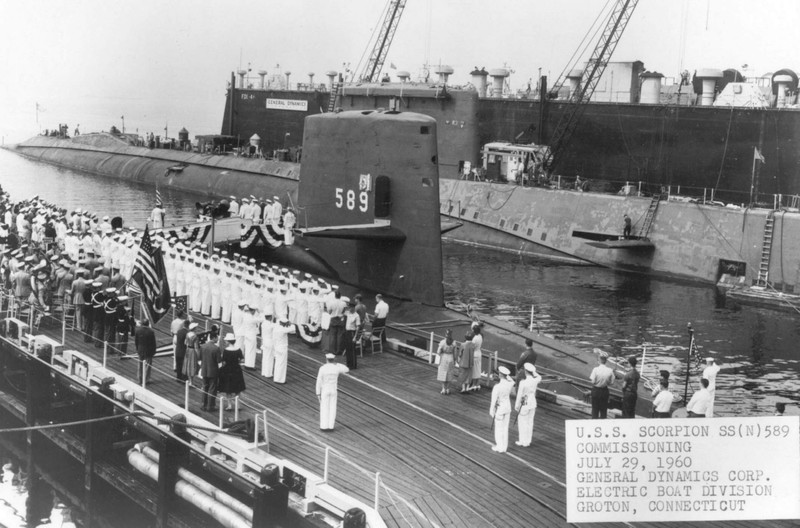
Some of Scorpion's crew disembarking at Norfolk Navy base. Photo courtesy of Lt. Cmdr. Nate Anderson.
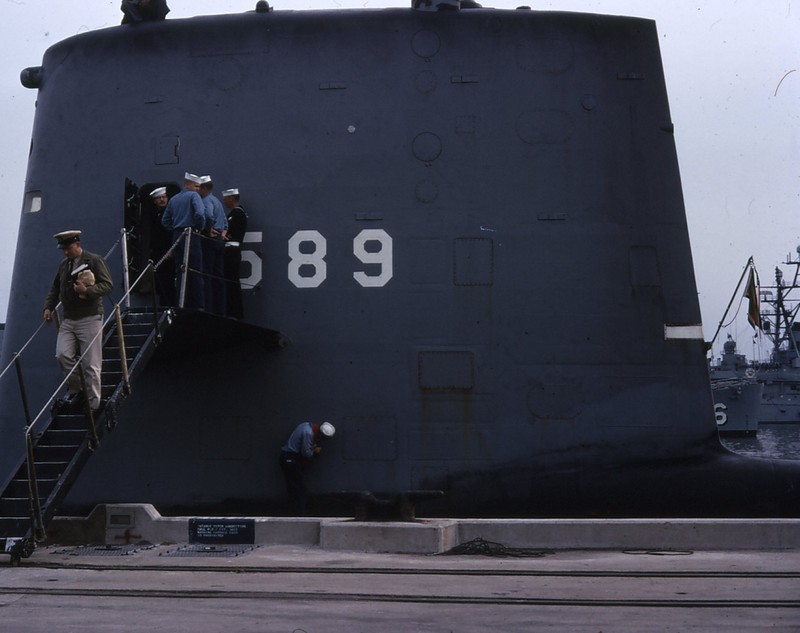
U.S. Navy submarine silhouettes circa 1960. The Scorpion was a Skipjack-class submarine. Courtesy of Ingersoll-Rand. Corp.
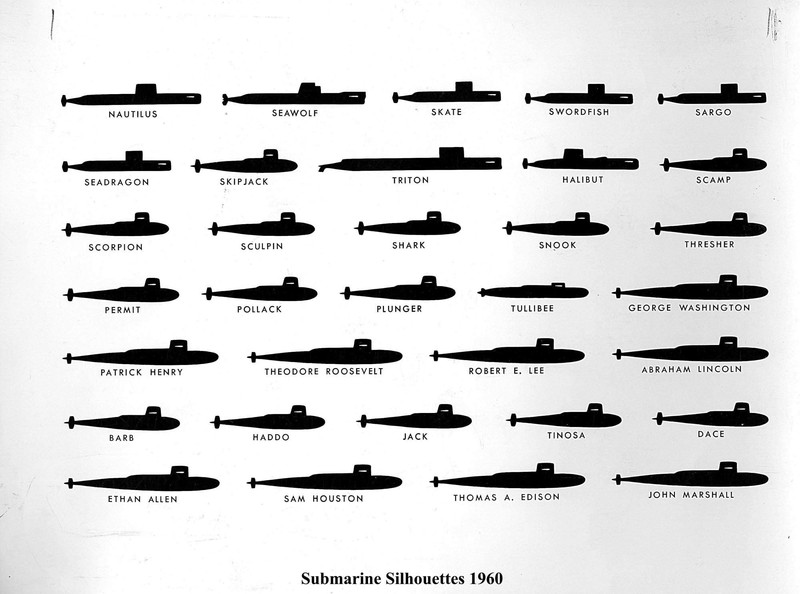
Part of Huntington Park, Newport News, VA--where the memorial is located.

Backstory and Context
Text-to-speech Audio
The U.S.S. Scorpion (SSN 589) was a nuclear submarine, and the sixth U.S. Navy vessel to bear the name. In May of 1968, it vanished into the Atlantic with 99 crew members, having previously departed the Navy base in Norfolk, VA on February 15 for a three-month deployment. Due for a return to port on May 27, 1968, her disappearance quickly caused consternation among Navy officials and family members of the crew.
The Scorpion’s skipper Commander Francis A. Slattery's final transmission to headquarters took place on May 22, reporting the sub's impending return on Memorial Day, May 29 at 1pm. As customary, the Navy publicly announced the vessel's return to port 72 hours prior to its expected arrival.
At 3:15pm on May 29, only hours after Scorpion was supposed to have arrived at her berth in Norfolk, the Navy officially reported the vessel as missing, and issued the orders that would spark the largest U.S. naval operation since the Cuban Missile Crisis six years earlier. Navy ships scoured the waters of the East Coast and the point of her last transmission in the Azores.
The Scorpion was declared “presumed lost” on June 5, 1968 by the Chief of Naval operations, Admiral Thomas H. Moorer. The Navy released little information on the disappearance, and conspiracy theories of Soviet involvement soon surfaced. But the search for the missing sub continued, even while a Navy administrative investigation looked for clues back in the United States.
In October came shattering news. The Scorpion had been found. A search flotilla led by USNS Mizar, an oceanographic research vessel, had discovered the wreckage of the missing sub by photographing the ocean floor with a towed research sled. The broken hull of the Scorpion was found southwest of the Azores, in a search radius that had been triangulated using signals that scientists believed had originated when the submarine sank on May 22. The Navy announced the discovery on Oct. 30, 1968.
Unfortunately the wreckage did not lead to answers. The investigative panel concluded that, “The certain cause of the loss of Scorpion cannot be ascertained by any evidence now available."1
Despite advancements in technology in the intervening decades--and multiple petitions from family and friends of the deceased crew--the U.S. Navy has not attempted another survey of the wreck to determine the cause of Scorpion's sinking, which lies in international waters. The Navy does claim to monitor the radioactivity of the site, due to the presence of two nuclear torpedoes and a nuclear reactor on board the sunken vessel.Due to the suspicious, unsolved circumstances of the sinking (and the mysterious disappearance of three other submarines that year--one Israeli, one French, and one Russian), multiple theories have been put forth as to the causes of Scorpion's demise. Leading theories include: torpedo malfunction, trash disposal unit malfunction, and Soviet attack. The U.S. Navy has endorsed none of these hypotheses in its official reports.
Sources
2. Dan, Vergano. "Submarine Vets Call for USS Scorpion Investigation." USA Today, November 10, 2012. https://www.usatoday.com/story/tech/sciencefair/2012/11/10/scorpion-expedition-navy/1692343/
3. Fisher, Bernard. U.S.S. Scorpion SSN 589. The Historical Marker Database. August 04, 2010. Accessed September 05, 2017. https://www.hmdb.org/marker.asp?marker=34035.
4. Priolo, Gary. Scorpion (SSN-589). NavSource History. Accessed September 05, 2017. http://www.navsource.org/archives/08/08589.htm.
